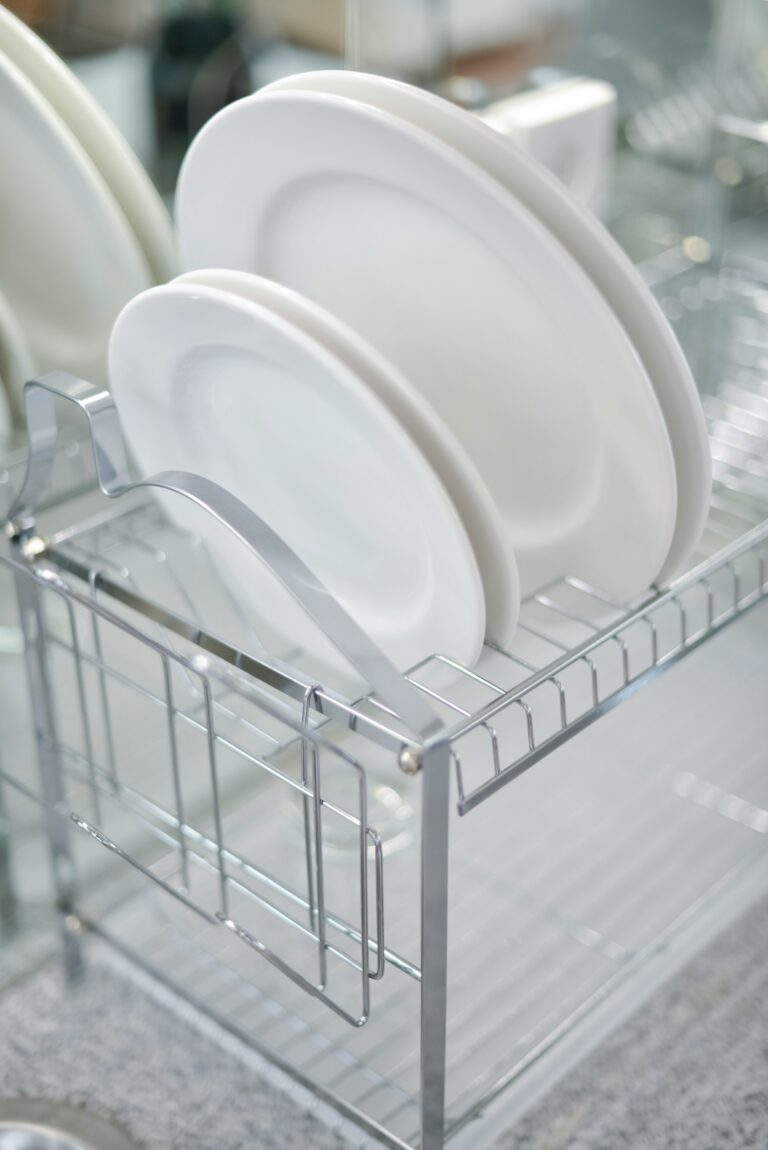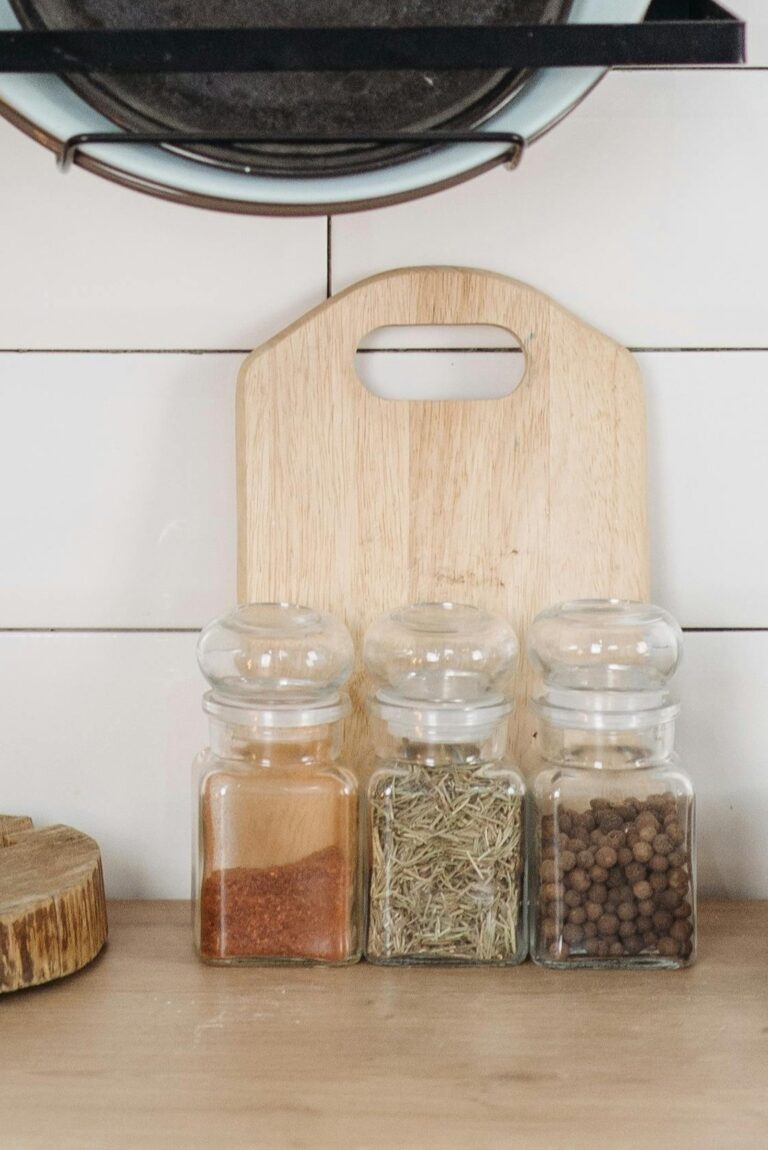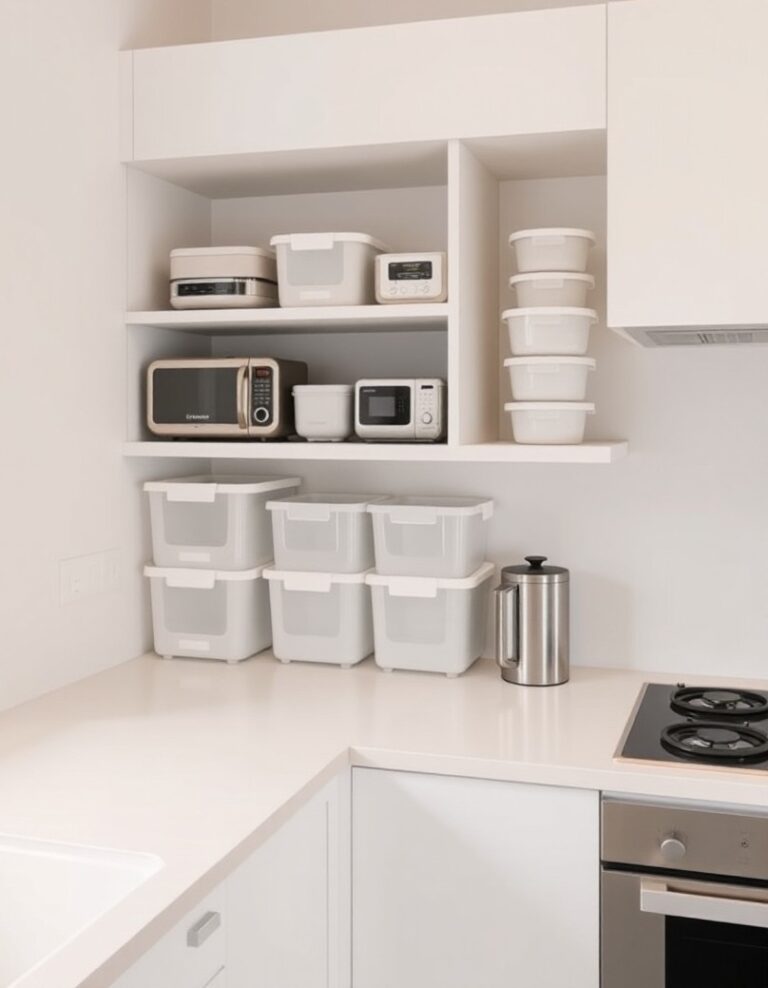Kitchen wrap, foil, and plastic bags tend to create clutter fast. They slip around in drawers, unravel at the wrong moment, or disappear when you need them most.
These six storage methods can help you keep everything accessible and neat. They work with different kitchen layouts and don’t require major changes to your existing setup.
Why Kitchen Wrap Organization Matters

Keeping your kitchen wrap storage organized can save time during meal prep. When everything has a clear spot, you can grab what you need without digging through piles or shifting items around.
It can also help reduce waste. Foil and plastic wrap last longer when stored properly, and you’re less likely to accidentally tear or damage rolls.
Good organization can make cooking feel less stressful. You won’t waste time hunting for the right roll or dealing with tangled messes.
1. Use a Dedicated Drawer Organizer for Kitchen Wrap and Foil
A drawer organizer with individual slots keeps each roll separated. This prevents them from sliding around or unraveling unexpectedly when you open the drawer.
Look for organizers with adjustable dividers. They can fit different roll sizes and adapt as your storage needs change over time.
Bamboo or plastic organizers both work well depending on your preferences. Choose one that fits your drawer dimensions and holds the number of rolls you typically keep.
Place the organizer near your food prep area. Quick access can make wrapping leftovers feel less like a chore.
Consider measuring your drawer before purchasing. This simple step can help you avoid organizers that don’t fit properly or leave too much wasted space.
2. Mount a Wall Dispenser to Organize Plastic Wrap
Wall-mounted dispensers work well in smaller kitchens. They free up drawer space and keep rolls at eye level where they’re easy to spot.
Many models include a built-in cutter that makes tearing cleaner and faster. You won’t struggle with serrated edges or crumpled sheets that don’t separate cleanly.
Look for dispensers that can hold multiple rolls. Some models accommodate three or more different types of wrap in one unit.
Install the dispenser inside a pantry door or on an empty wall section. Just make sure it’s within comfortable reach while you’re cooking or cleaning up.
Wall dispensers can also work under cabinets. This placement keeps them accessible without taking up visible wall space.
Read More: How To Organize Kitchen Cabinets By Frequency Of Use
3. Store Plastic Bags in a Compact Holder
Plastic bags multiply quickly and take up more space than expected. A dedicated holder keeps them contained and easy to access when you need one.
Try a wall-mounted dispenser or a drawer insert designed specifically for bags. Both options let you pull one bag at a time without creating a mess or emptying the entire collection.
Fabric holders that hang on cabinet doors offer another solution. They’re washable and can hold a surprising number of bags in a small footprint.
Keep the holder near your trash or recycling area. This placement can encourage reuse and help you stay organized.
Some holders have openings at both ends. This design lets you add new bags at the top while pulling used ones from the bottom.
4. Label Your Foil Organization System
When you have multiple types of wrap, labels prevent confusion. Mark containers or drawer sections with simple tags that identify parchment paper, wax paper, or aluminum foil.
Clear labels save time during busy cooking moments. You won’t need to unwrap or guess which roll is which, especially if packaging looks similar.
Use a label maker or removable stickers. They’re easy to update if your storage system changes or you switch product brands.
Color-coded labels can add another layer of organization. Assign each type of wrap its own color for even faster identification.
Include the purchase date on labels if you buy in bulk. This can help you rotate stock and use older items first.
5. Keep a Wrap and Foil Holder in Your Pantry
A freestanding holder works well if drawer space is limited. Place it on a pantry shelf where it’s easy to spot and reach without moving other items.
Choose a holder that keeps rolls upright and stable. Horizontal storage can lead to unraveling and wasted material when rolls shift position.
Metal holders tend to be more durable for long-term use. They can handle the weight of multiple rolls without tipping or bending.
Group similar items together. Store plastic wrap dispensers near food storage containers so everything you need for leftovers is in one zone.
Consider tiered holders if you have vertical space. They can maximize shelf capacity without creating a cluttered appearance.
Also Read: 6 Solutions for Reusable Containers That Don’t Nest Properly
6. Use Magazine Holders for Vertical Kitchen Wrap Storage
Magazine holders offer a budget-friendly option for organizing wrap and foil. They keep rolls upright and fit neatly on shelves or in deep drawers.
This method works especially well for larger rolls or bulk purchases. Each holder can fit multiple items without crowding or forcing rolls to bend.
Acrylic holders let you see contents at a glance. This transparency can help you track inventory and know when items need restocking.
Label the front of each holder. This simple step can help everyone in your household find what they need quickly without searching through multiple containers.
Place heavier rolls at the back of each holder. This arrangement can prevent tipping and keeps the holder stable.
Quick Tips for Maintaining Your Organization System
Once you set up your storage, a few small habits can help maintain it. Return items to their designated spots after each use instead of leaving them on counters.
Check expiration dates occasionally. Some wraps and foils can degrade over time, especially in humid environments or extreme temperatures.
Wipe down holders or organizers every few months. Dust and food residue can accumulate even in closed storage areas.
Adjust your system as your needs change. What works now might need tweaking as you add new products or shift your kitchen layout.
Keep a running list of items that need replacing. This can prevent last-minute shopping trips when you run out of essential supplies.
FAQ: Organizing Kitchen Wrap and Foil
How do you keep plastic wrap from sticking to itself?
Store plastic wrap in a cool, dry place away from heat sources. Some people keep it in the refrigerator to reduce static and make it easier to handle.
The cold temperature can help the wrap release more smoothly. Just let it warm up slightly before using if it feels too stiff to work with.
What is the best way to store aluminum foil?
Keep aluminum foil in its original box with the built-in cutter if possible. Store it flat in a drawer or upright in a holder to prevent the roll from unraveling.
Avoid storing foil near moisture or extreme temperature changes. These conditions can affect the material over time and reduce its effectiveness.
Where should you store plastic bags in the kitchen?
Store plastic bags in a dispenser near your trash or recycling area. This placement can make it convenient to grab a bag when sorting waste or collecting recyclables.
Wall-mounted holders or drawer organizers both work well. Choose the option that fits your kitchen layout and workflow best.
How do you organize kitchen wrap without a drawer?
Use wall-mounted dispensers or freestanding holders on pantry shelves. Both options keep wrap accessible without requiring drawer space that might be limited.
Magazine holders or small bins can also work on open shelving. Just make sure items are stable and won’t tip over easily when you pull rolls out.
Can you store plastic wrap and foil together?
Yes, storing them together can work well if you use dividers or separate compartments. This keeps everything in one spot while preventing rolls from tangling or unraveling.
A drawer organizer or multi-slot holder can help maintain separation. Label each section to avoid confusion during busy cooking moments when you’re moving quickly.
How often should you reorganize your wrap storage?
Check your system every few months or when you notice items becoming cluttered. Quick adjustments can help maintain order without requiring major effort or time investment.
If your cooking habits change or you add new products, update your storage setup. Flexibility can help the system stay functional over time.
Ready to Organize Kitchen Wrap and Foil?
Setting up a system for your wrap, foil, and bags can make daily cooking tasks feel smoother. Choose the methods that fit your space and adjust as needed over time.
Small changes in how you store these items can help reduce frustration. Try one or two ideas to start, and build from there as you discover what works best for your routine.



